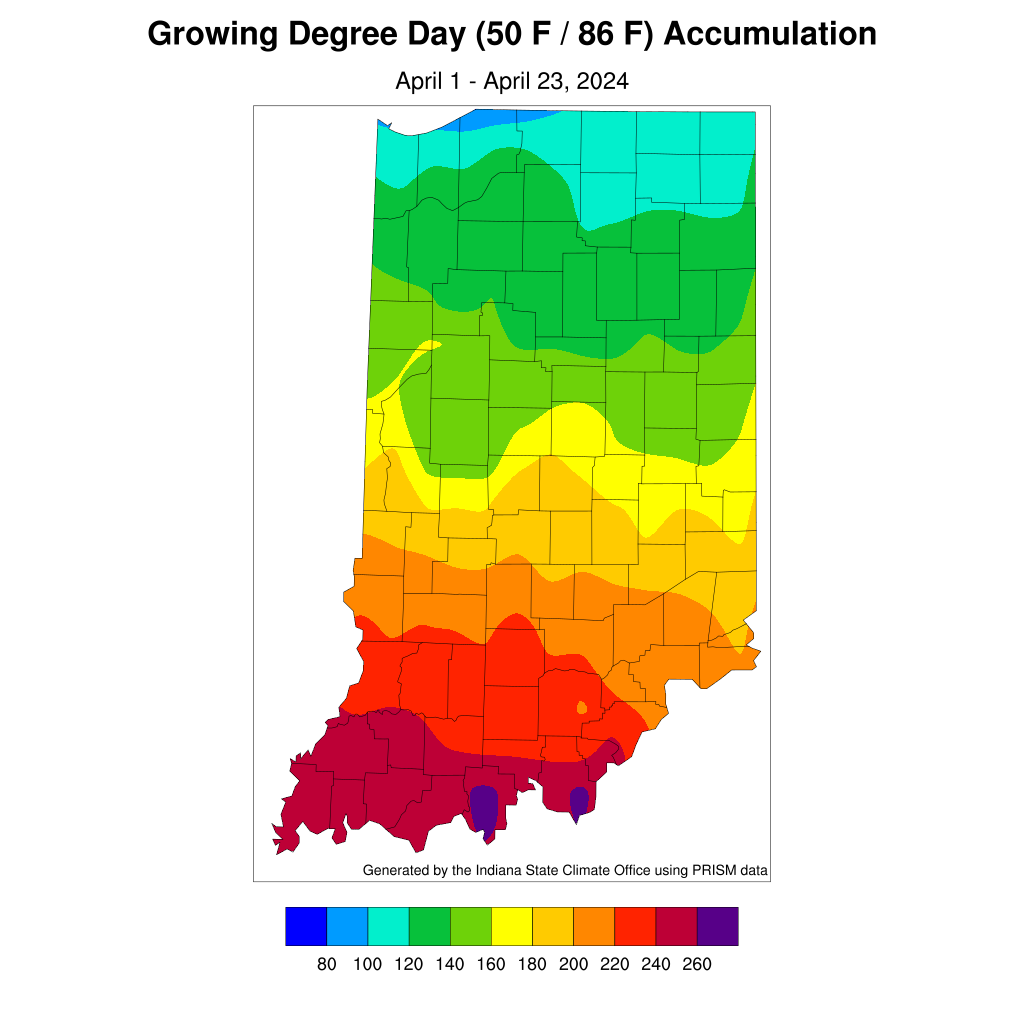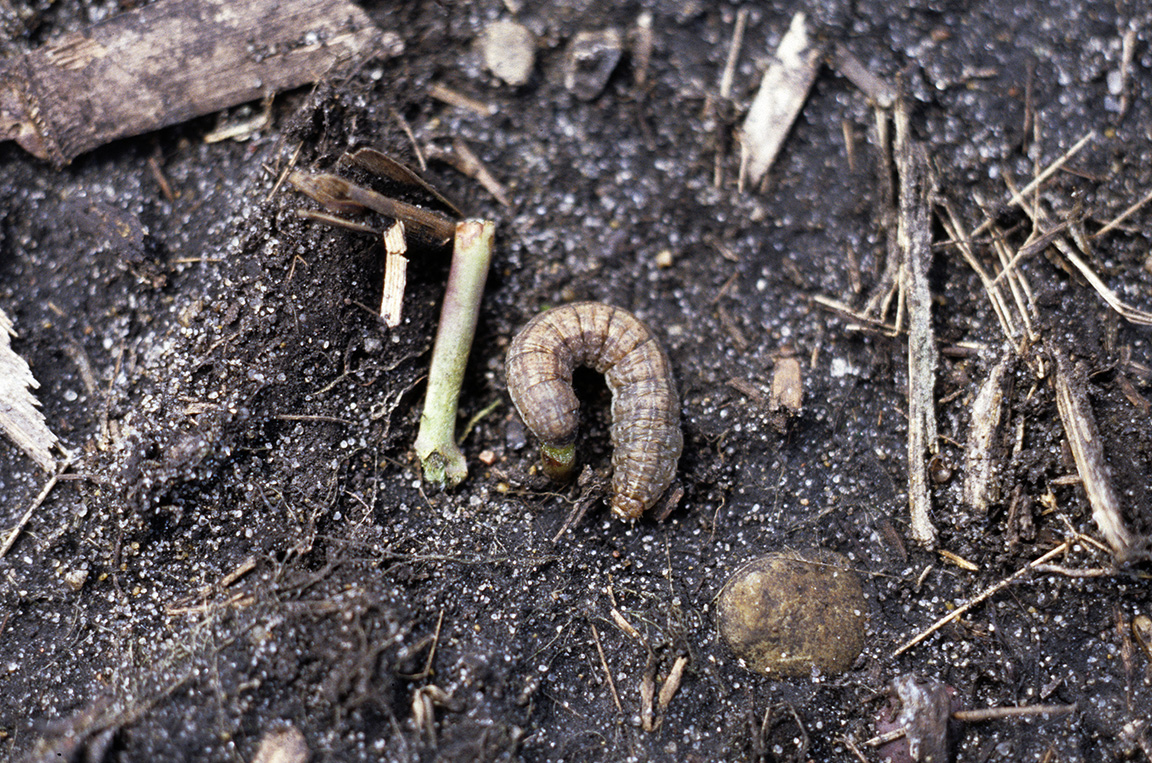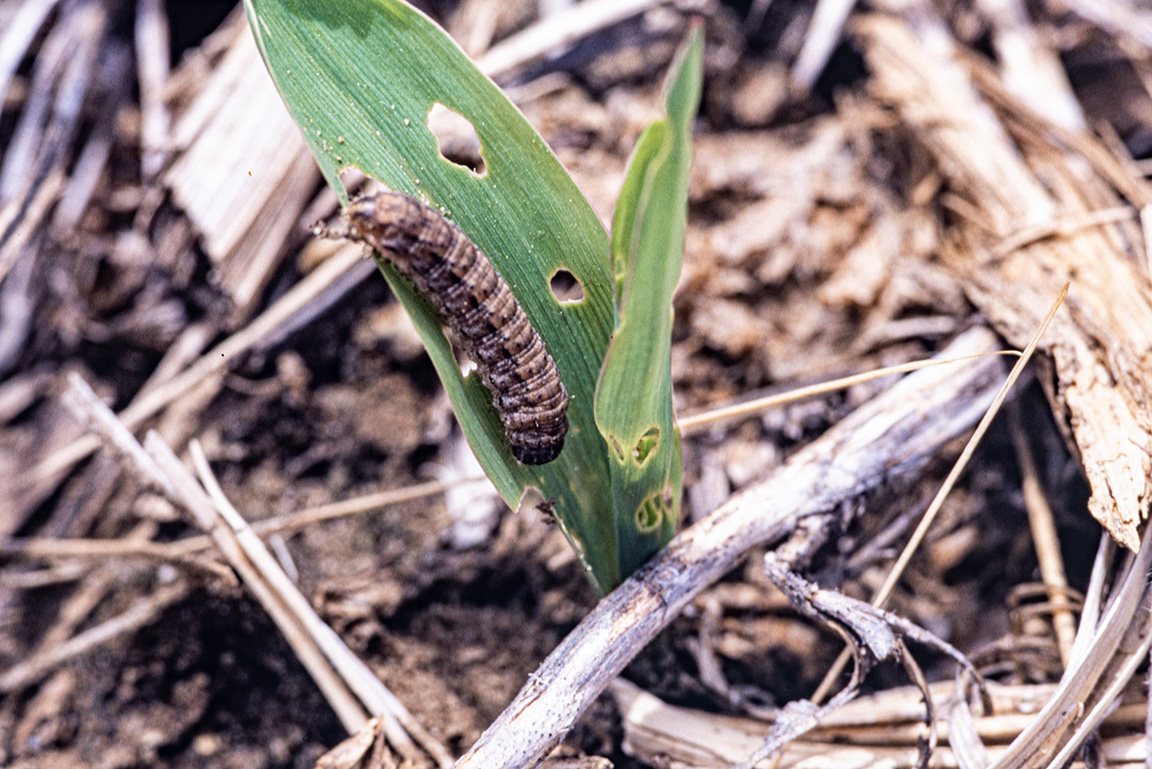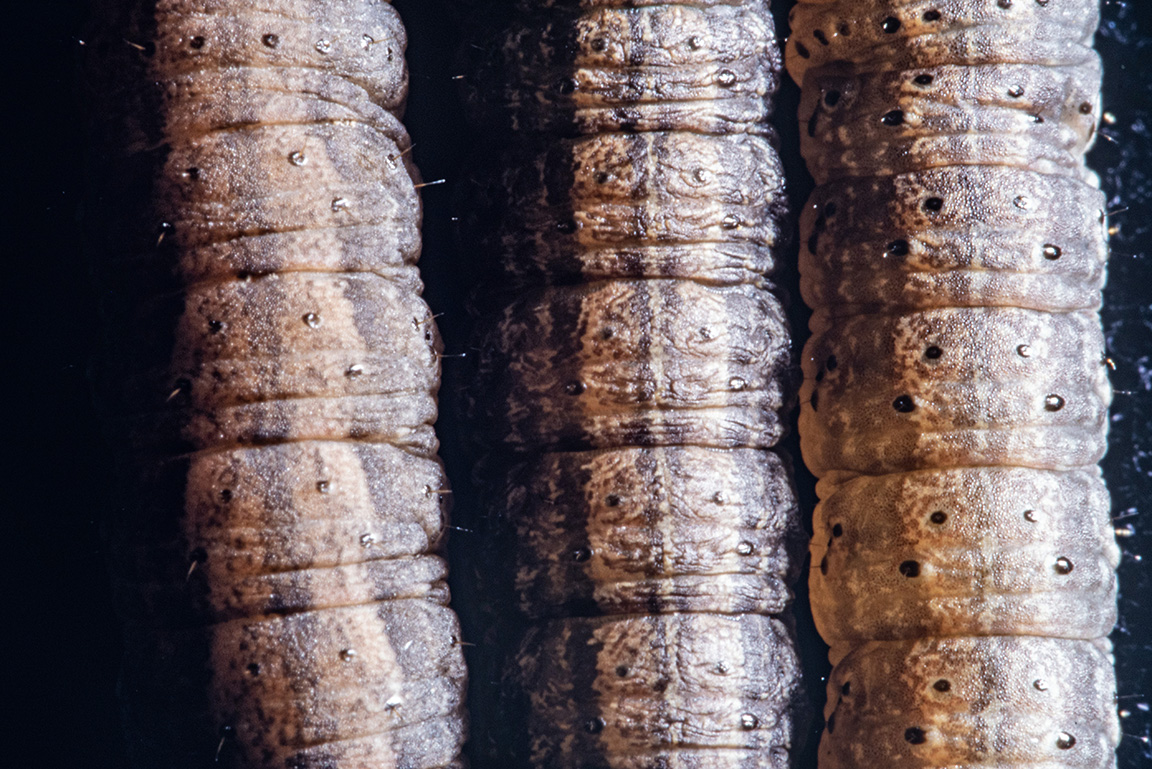Locally, we have been impressed and amazed at the number of black cutworm moths captured in our pheromone traps the last few weeks. Though we are wary of the potential impact these larvae could have on the slow emerging corn crop, we know that heat units for insect development have also been slow in coming during this cool spring. Many cutworm species look alike and identification is often confusing. Historically, the black cutworm is our most common species damaging the crop, which is why most assume it the culprit when damage is found, but it’s far from the only cutworm species in the state.
Black cutworm do not overwinter in the Midwest, which is why we have monitored their arrival each spring with pheromone traps. Once they arrive in large numbers (also called “intensive captures”) we begin predicting their development and subsequent damage by tracking heat unit accumulations. We recorded intensive captures on, and around, the first of April and have begun tracking their development (see accompanying map). Those females looked for broadleaf weeds to lay eggs in early April and those larvae have hatched, but since then, not much has happened. There have not been sufficient heat units accumulated this spring for black cutworm to get 1/2 to 3/4 inches long – the size when they begin to cut plants (300 accumulated heat units). So, if you are finding cutworm damage on emerged corn (or any plant, for that matter) at this time, there is another cutworm species to blame, a species that overwinters locally…this can include any one of the dingy, variegated, and/or claybacked cutworms.
Cutworms are larvae of noctuid moths, a huge family with over 11,000 species worldwide (which include many familiar pests like the corn earworm and western bean cutworm) and some are important pests. The dingy, variegated, and claybacked cutworm species all overwinter in Indiana as partially-grown larvae. They are not specialist feeders, and feed on a wide range of plants. Late in the growing season, as cold weather moves in, the larvae cease feeding and become dormant under mats of plants (e.g., chickweed) during the winter months. As temperatures begin to increase in the early spring, they resume feeding. They can complete develop on these weeds, but typically these plants are killed by spring herbicide applications, forcing them to move to alternate food sources. If available, this could include the emerging crop. Because these larvae are about ¾ to 1 inch in length at this time of year, they aren’t deterred much by the low concentrations of insecticidal seed treatments in above-ground plant tissues. Therefore, depending on density of larvae and the rate of the crop’s growth and development, damage may be quite significant.
The dingy and variegated cutworms are primarily leaf feeders and will rarely cut plants, and if they do, the cutting is above ground level. Because a corn plant up to the 5-leaf stage can withstand severe defoliation without a yield loss, treatment for these cutworms is rarely justified. However, the claybacked cutworm’s damage is a mix of leaf feeding and plant cutting so black cutworm thresholds should be observed. To add to the confusion, other species of cutworms may be encountered feeding on crops as well. The sandhill cutworm, as its name implies, is found on sandy knolls. Sandhill and the glassy cutworms tend to be a perennial threat in specific environments, most producers that have experience with them are quite aware of their destructive abilities.
Identification of these cutworm species is a little tricky and requires a pretty good understanding of morphological characteristics of immature insects, a course taught in Entomology. In short, while using a 10X magnifying lens, carefully analyze the skin texture of the worm. If it is considerably “bumpy,” it is most likely a black cutworm. The other cutworm species have smooth skin. Species identification can usually be confirmed by sending us quality, in-focus pictures, especially of the dorsal, i.e., top, of the cutworms. Happy Scouting!
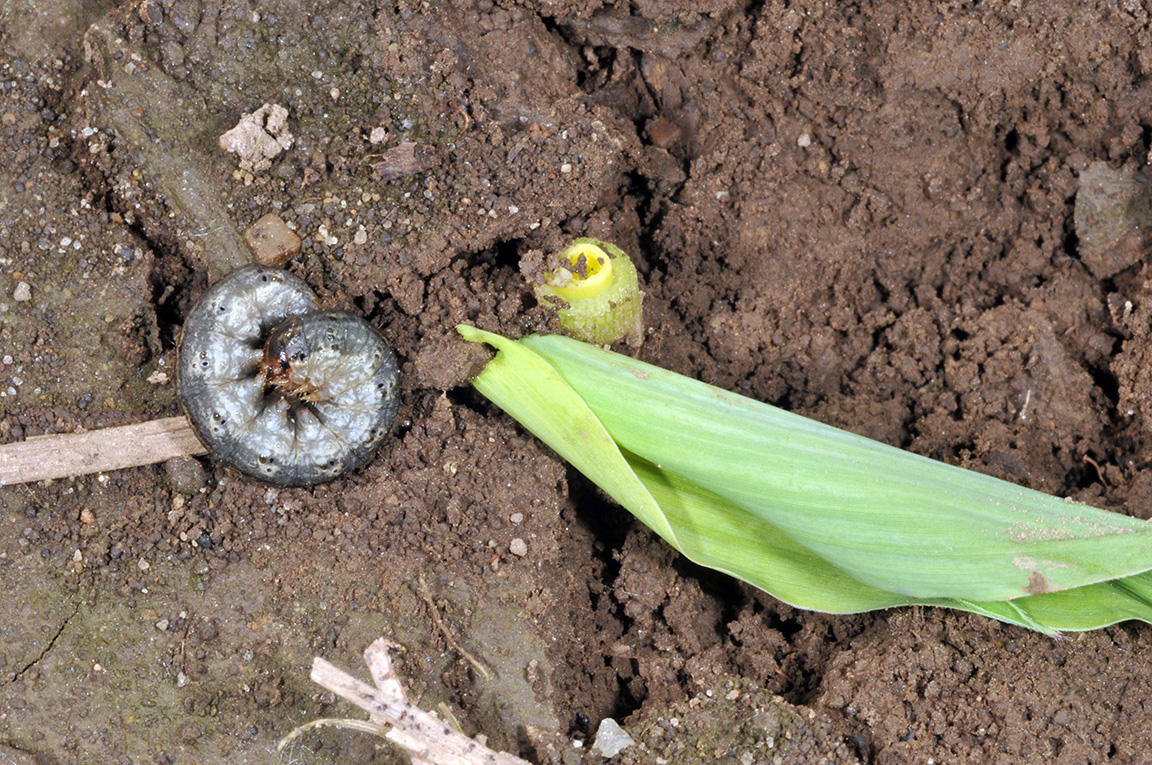
Revealed, from just under the soil surface, a black cutworm curled next to cut corn seedling. (Photo Credit: John Obermeyer)
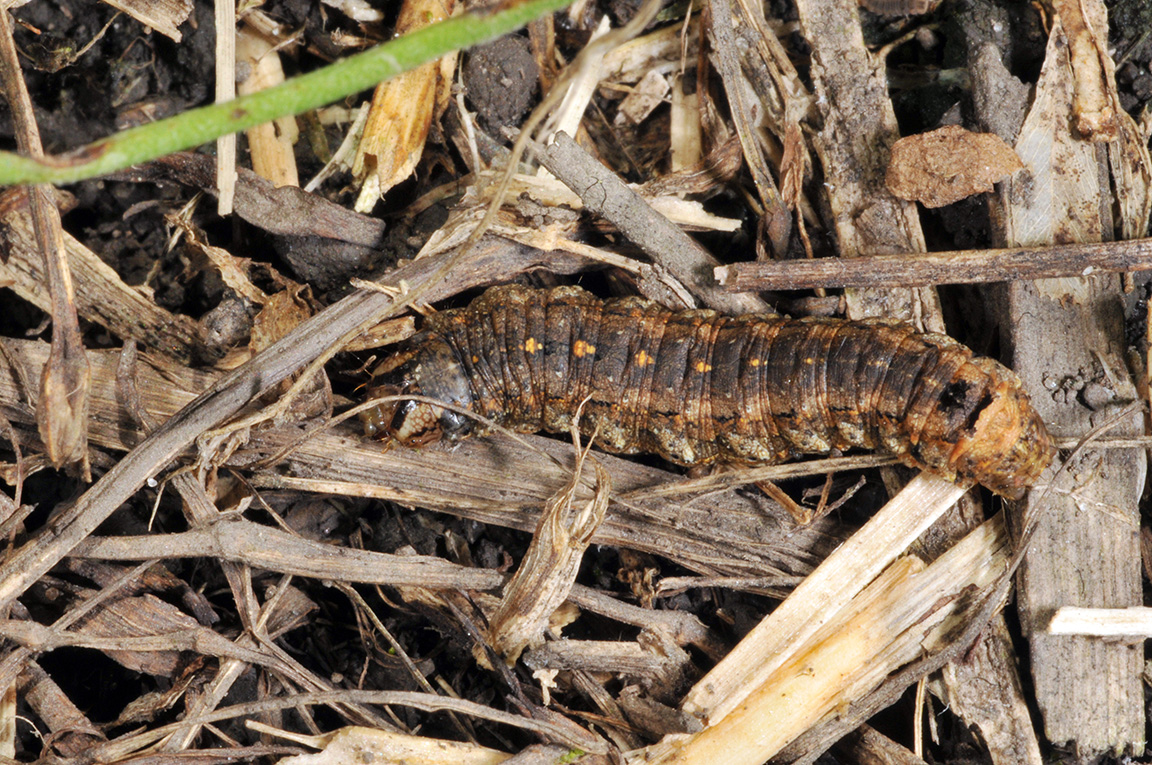
Variegated cutworm with distinctive gold spots on the dorsal surface. (Photo Credit: John Obermeyer)


